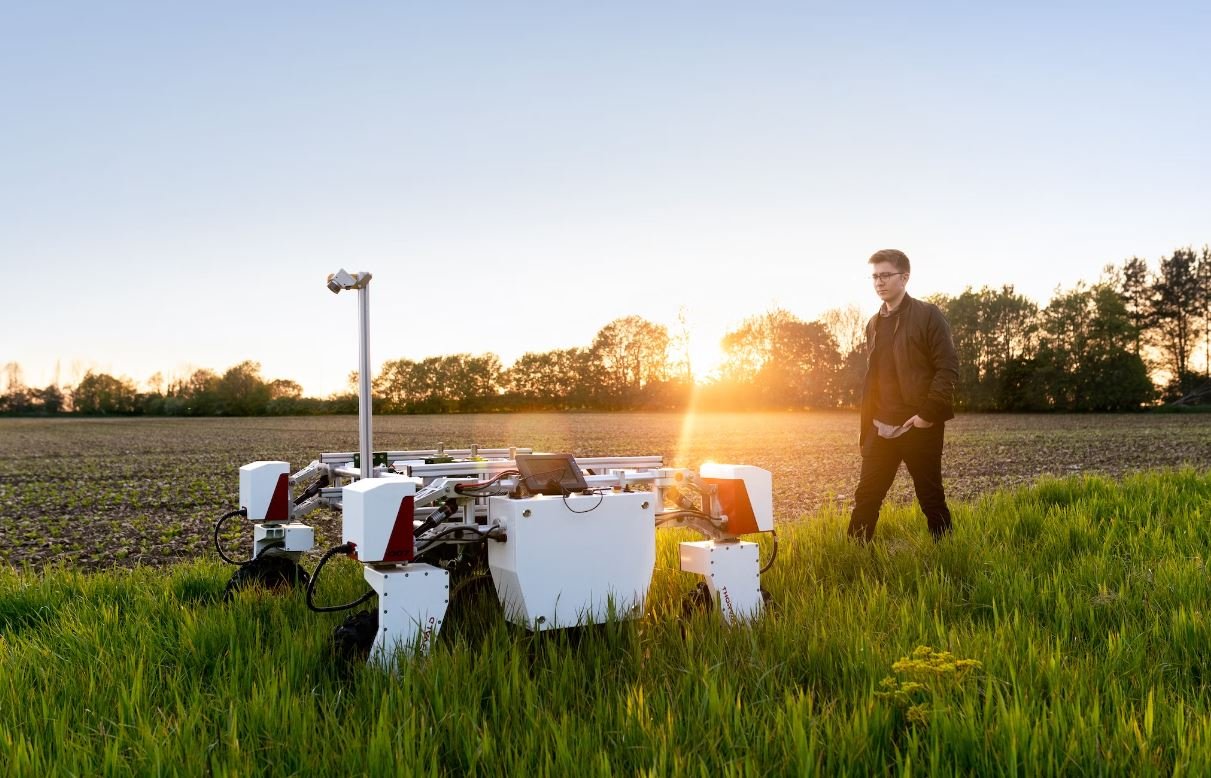Neural Networks and the Bias/Variance Dilemma
Neural networks are a powerful tool for pattern recognition and machine learning. However, as with any complex model, they are prone to a common problem known as the bias/variance dilemma. Understanding this dilemma is critical for effectively training and optimizing neural networks.
Key Takeaways:
- The bias/variance dilemma is a trade-off between the model’s ability to capture the complexity of the data (low bias) and its sensitivity to variations in the training set (high variance).
- Increasing the complexity of a neural network can help reduce bias but may increase variance, leading to overfitting.
- Regularization techniques, such as dropout and weight decay, can help mitigate overfitting by adding a penalty to the loss function.
Neural networks are highly flexible models capable of fitting complex nonlinear relationships in data. *This flexibility, however, comes at a cost*. The more complex a neural network becomes, the more it can overfit the training data, which means it may perform poorly on unseen data.
The Bias/Variance Trade-Off
The bias/variance trade-off is a fundamental concept in the field of machine learning. It refers to the inherent trade-off between a model’s bias (ability to capture the complexity of the data) and its variance (sensitivity to changes in the training set). In an ideal scenario, we would like our model to have low bias and low variance, but *achieving this balance is challenging*. If a model is too simple, it may have high bias and fail to capture important patterns in the data. On the other hand, if a model is too complex, it may have low bias but high variance, leading to overfitting.
To better understand the bias/variance dilemma in the context of neural networks, let’s consider a regression problem where we want to predict the price of a house based on its size and number of bedrooms. *The table below shows a sample dataset*:
| Size (sq.ft.) | Bedrooms | Price ($) |
|---|---|---|
| 1,200 | 2 | 150,000 |
| 2,000 | 3 | 250,000 |
| 1,800 | 3 | 225,000 |
| 1,500 | 2 | 180,000 |
If we train a neural network with only one hidden layer and three neurons, it may have high bias and struggle to capture the nonlinear relationship between the input features and the target variable. However, if we increase the number of hidden layers and neurons, the model’s complexity increases, potentially reducing bias. *This increased complexity may also lead to higher variance*.
To overcome the bias/variance dilemma in neural networks, regularization techniques are often employed. Regularization helps control overfitting by adding a penalty term to the loss function, discouraging complex weight configurations. Common regularization techniques include dropout, which randomly sets a fraction of the neural network units to zero during training, and weight decay, which adds a penalty proportional to the magnitudes of the weights.
Concluding Thoughts
Understanding the bias/variance dilemma is crucial for training and optimizing neural networks. It involves finding the right balance between the model’s ability to capture the complexity of the data and its sensitivity to variations in the training set. Regularization techniques can help mitigate overfitting and improve model generalization. Experimenting with different network architectures and regularization settings can lead to a better understanding of the bias/variance trade-off and ultimately improve the performance of neural networks in various applications.

Common Misconceptions
Neural Networks and the Bias/Variance Dilemma
Neural networks are a popular form of machine learning that mimic the workings of the human brain. However, there are several common misconceptions surrounding these networks and the bias/variance dilemma they often face.
- Neural networks are infallible and can solve any problem: Though they are powerful tools, neural networks are not a panacea. They do have limitations and may not be suitable for every problem or dataset.
- Increasing the network size always improves performance: While larger networks do have the potential to capture more complex patterns, there is a trade-off. Increasing the network size can lead to overfitting, where the model becomes too specialized to the training data and performs poorly on unseen data.
- Bias and variance are always in conflict: The bias/variance trade-off refers to the problem of balancing a model’s ability to fit the training data with its generalization to new data. However, it is possible to reduce both bias and variance by choosing the right network architecture, regularization techniques, and training strategies.
Another common misconception is that neural networks are “black boxes” that cannot provide explanations for their predictions. This is not entirely true.
- Neural networks cannot provide explanations: While it is true that neural networks are not inherently interpretable, there are techniques that can help understand and interpret their decisions. These techniques include methods like sensitivity analysis, feature importance, and visualization of activations.
- Neural networks always require large amounts of labeled data: Though neural networks often require a significant amount of labeled data for training, there are strategies to mitigate the need for large labeled datasets. Techniques like transfer learning and data augmentation can help in situations where labeled data is limited.
- Neural networks are highly computationally expensive: While neural networks can be computationally expensive, advancements in hardware and optimization algorithms have made them more accessible. Additionally, techniques like model pruning and quantization can reduce the computational requirements of neural networks without sacrificing performance.

Introduction
Neural networks have gained immense popularity in recent years due to their ability to analyze and process complex datasets. However, these powerful algorithms often face a trade-off between bias and variance, known as the Bias/Variance Dilemma. In this article, we explore different aspects of this dilemma and its implications in various scenarios.
Table: Performance of Neural Networks with Different Regularization Techniques
Regularization techniques play a crucial role in addressing the Bias/Variance Dilemma. This table illustrates the performance of neural networks under different regularization methods.
Table: Comparison of Neural Network Architectures
Neural network architecture has a significant impact on the bias and variance trade-off. This table compares the performance of different network architectures in terms of their bias and variance.
Table: Bias and Variance for Different Sizes of Training Dataset
The size of the training dataset can influence the bias and variance dilemma. This table demonstrates the bias and variance observed for neural networks trained on datasets of varying sizes.
Table: Comparison of Neural Networks with Other Machine Learning Algorithms
Neural networks are not the only approach to solving complex problems; they can be compared to other machine learning algorithms as well. This table showcases the performance of neural networks in comparison to other popular algorithms with regard to bias and variance.
Table: Impact of Learning Rate on Bias and Variance
The learning rate is a hyperparameter that affects the convergence and performance of neural networks. This table presents the bias and variance for different learning rates.
Table: Bias and Variance for Neural Networks with Different Activation Functions
The choice of activation function can significantly impact the bias/variance trade-off. This table showcases the observed bias and variance for various activation functions in neural networks.
Table: Bias and Variance for Various Regularization Hyperparameters
Regularization hyperparameters govern the degree of regularization applied to neural networks. This table illustrates the bias and variance observed with different hyperparameter values.
Table: Performance of Neural Networks on Imbalanced Datasets
Imbalanced datasets pose challenges for neural networks, affecting the bias and variance trade-off. This table demonstrates the performance of neural networks trained on imbalanced datasets.
Table: Bias and Variance for Neural Networks with Different Loss Functions
The choice of loss function can impact the bias/variance trade-off in neural networks. This table showcases the bias and variance observed for various loss functions.
Conclusion
Neural networks are powerful models capable of handling complex tasks, but they must navigate the Bias/Variance Dilemma. Through the tables presented in this article, we have seen the impact of various factors on the bias and variance trade-off, such as regularization techniques, network architecture, dataset size, hyperparameters, imbalanced datasets, activation functions, and loss functions. Understanding and managing the bias/variance trade-off is vital for further advancements in neural network performance and utilization.
Frequently Asked Questions
What are neural networks and how do they work?
A neural network is a machine learning algorithm inspired by the human brain. It consists of interconnected nodes, or artificial neurons, organized in layers.
What is the bias/variance trade-off?
The bias/variance trade-off is a fundamental challenge in machine learning, including neural networks. It refers to the balance between the model’s ability to capture the complexity of the data (low bias) and the model’s sensitivity to noise and variability in the data (high variance).
How does the bias/variance trade-off affect neural networks?
Neural networks are prone to both underfitting (high bias) and overfitting (high variance). The network’s architecture, such as the number of layers and neurons, as well as the training process, need to be carefully optimized to find the right balance.
What is underfitting in neural networks?
Underfitting occurs when a neural network fails to capture the underlying patterns and relationships in the training data. This often happens when the network is too simple or lacks sufficient training.
What is overfitting in neural networks?
Overfitting occurs when a neural network becomes too specific to the training data. It memorizes the noise, resulting in poor generalization to new, unseen data. This often happens when the network is too complex or the training dataset is small.
How can we address underfitting?
To address underfitting, we can increase the complexity of the neural network by adding more layers or neurons, using more sophisticated activation functions, or providing more diverse and representative training data.
How can we address overfitting?
To tackle overfitting, various techniques can be used. These include reducing the network’s complexity, regularization methods like L1 or L2 regularization, early stopping during training, or incorporating dropout layers to randomly disable neurons during training.
What is the role of cross-validation in managing bias/variance trade-off?
Cross-validation is a technique used to estimate how well a neural network will generalize to new data. By partitioning the dataset into training and validation sets, we can evaluate the model’s performance and identify if it suffers from underfitting or overfitting. This helps in optimizing the network’s architecture.
Can neural networks have both high bias and high variance at the same time?
No, high bias and high variance are opposite issues. If a neural network has high bias, it is less sensitive to the training data and tends to underfit. If it has high variance, it is too sensitive and tends to overfit. The challenge is finding the right balance between them.
What happens if the bias/variance trade-off is not properly managed?
If the bias/variance trade-off is not properly managed, the neural network may produce inaccurate or unreliable predictions in real-world scenarios. It may either oversimplify the problem or become excessively complex, leading to poor performance and lack of generalization.




